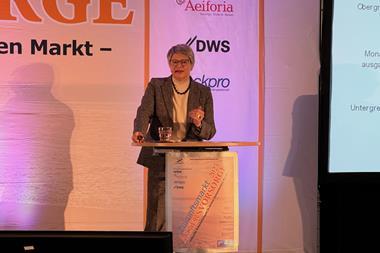Strengthening financial markets throughout March enabled Spanish occupational pension funds to achieve positive returns for the month, according to figures from Mercer’s Pension Investment Performance Service (PIPS).
The average return for the month was 1.1%, the biggest – 2.4% – coming from non-EU equity portfolios.
EU equity portfolios returned 2.1%, fixed income 0.3%.
However, this did not compensate for the turbulence in the second half of 2015 and the first two months of this year.
Across all asset classes, returns for the first quarter of 2016 were -0.4%, with EU equities returning -7.6% and non-EU equities -3.5%.
Fixed income portfolios, however, made gains of 1.5%.
The PIPS survey covers a large sample of Spanish pension funds, most of them occupational schemes.
Over the 12 months to end-March 2016, fixed income returned exactly 0.0%, while EU equities returned -15.4% and non-EU equities -9.3%.
Xavier Bellavista, principal at Mercer, said: “The quarter has seen volatile performances, especially in equity markets. EU equity assets had the worst negative performance, but non-EU equity assets also posted negative returns, especially because of the performance of non-EU currencies.”
He added: “Fixed income assets are also increasing in volatility and have incurred a negative performance for some months.
“EU fixed income assets made positive returns for the quarter to end-March, but lower returns are now expected because fixed income indices posted a negative performance during April.”
Bellavista said non-EU fixed income assets had been affected by the negative performance of some emerging fixed income assets, and also by the depreciation in non-EU currencies.
Meanwhile, according to Spain’s Investment and Pension Fund Association (INVERCO), occupational pension funds returned -3.33% for the 12 months to 31 March 2016.
Average annualised returns for Spanish occupational funds were 4.66% for the three years to 31 March 2016, and 4.67% for the five years to that date.
As at the end of March 2016, total assets under management for the occupational pensions sector stood at €35bn, a decrease of 3.4% over the past year.
Total pension assets, including those in individual plans, now amount to €103.1bn, while the number of participants in the occupational system remains stable, at just over 2m.
According to INVERCO, the gradual shift away from domestic assets continues, with an average 60.6% of portfolios now invested domestically, compared with 61.4% at end-December 2015.
Non-domestic assets made up 22% of portfolios as at the same date, with the balance in cash and technical provisions.
Fixed income investments make up 57.3% of portfolios, barely unchanged over three months.
The biggest single component of pension fund portfolios – 32.3% – is still invested in Spanish government bonds, with a further 16.3% in Spanish corporate bonds.
Bellavista highlighted what he considered to be the most significant change in asset allocation in corporate pension funds in the past 15 years – the increased allocation to non-EU fixed income assets.
“Historically, this allocation was close to zero,” he said. “But, in the past three to four years, it has increased to around 6% of corporate pension fund portfolios.”
Over the past couple of years, he added, Spanish pension fund managers have been increasing the duration of fixed income portfolios in response to the extremely low interest-rate environment.
The average duration of corporate pension funds rose from 3.5 years at end-2013 to 4.5 years at end-2015.
Meanwhile, an average 21.2% of portfolios is invested in equities, down by 1.4 percentage points since end-December, according to INVERCO.
The category of ‘other investments’ – real estate and alternatives, almost all invested domestically – has increased from 3.6% at end-December 2015 to 4%, more than double the percentage in December 2011.





























No comments yet